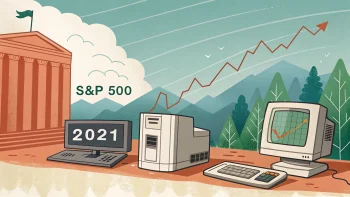The Federal Reserve, the central banking system of the United States, recently wrapped up a pivotal meeting that has left the stock market in a state of uncertainty. The meeting, led by Jerome Powell, the Chair of the Federal Reserve, unveiled a surprising announcement that has sent shockwaves through the financial world.
Table of Contents
ToggleSurprising announcement from the Federal Reserve
Contrary to previous statements made in July, Powell announced a 0.5% cut in interest rates for September. This unexpected move has sparked questions about the health of the economy and the future direction of the Federal Reserve’s monetary policy.
View this post on Instagram
A post shared by Taylor Sohns – CFP®, CIMA®, MBA – Finance (@lifegoalinvestments)
Impact of interest rate cuts on the stock market
Traditionally, large interest rate cuts have been seen as beneficial for stocks. They lower the cost of borrowing, encouraging businesses to invest and consumers to spend, stimulating economic growth. However, the recent rate cut was met with a sell-off in stocks. The reason for this seemingly counterintuitive reaction lies in the underlying cause of the rate cut — weakening jobs data.
Shift in focus: from inflation to unemployment
The Federal Reserve’s primary mandate is to promote maximum employment and stable prices. Recently, the focus has been more on inflation, but the recent shift in policy indicates a change in this stance. Powell stated that the Federal Reserve is now “recalibrating” its approach, a term he used 15 times during the meeting. This recalibration signifies a shift in focus from inflation to unemployment.
Concerns about rising unemployment
Powell expressed comfort with the current unemployment rate, which is 4.2%. However, when questioned about the trend of rising unemployment and whether the Federal Reserve was too late in implementing measures to curb it, he did not provide a clear answer. This lack of clarity has raised concerns about the Federal Reserve’s ability to manage the situation effectively.
Timing of the interest rate cuts
The Federal Reserve’s interest rate cuts work with long and variable lags, meaning the effects of these cuts are not immediately visible. With the trend of unemployment clearly on the rise, questions are being raised about whether the Federal Reserve has been too late in implementing the first interest rate cut.
Aggressive measures to curb unemployment
The shift in focus to unemployment indicates that the Federal Reserve is willing to get aggressive with interest rate cuts if unemployment shows historical signs of increasing and then spiraling out of control. This is a significant departure from the Federal Reserve’s traditional focus on inflation and represents a new approach to managing the economy.
Market reaction to the interest rate cut
Despite the larger than expected interest rate cut, stocks sold off. This reaction suggests that the market is starting to realize that the Federal Reserve does not cut interest rates without a reason. The rate cut is a response to weakening jobs data, which is a cause for concern. It indicates that the economy may not be as robust as previously thought, and that measures are needed to stimulate growth and prevent a rise in unemployment.
Significant shift in monetary policy
In conclusion, the recent Federal Reserve meeting has signaled a significant shift in monetary policy. The focus has moved from inflation to unemployment, and the Federal Reserve has shown a willingness to implement aggressive interest rate cuts to manage the situation. However, the market’s reaction to these measures indicates a level of concern about the economy’s underlying health. As the Federal Reserve continues to recalibrate its approach, it will be crucial to monitor the impact of these changes on the economy and the job market.
Frequently Asked Questions
Q. What was the surprising announcement from the Federal Reserve?
The Federal Reserve announced a 0.5% cut in interest rates for September, contrary to previous statements made in July.
Q. How do interest rate cuts traditionally impact the stock market?
Large interest rate cuts have traditionally been seen as beneficial for stocks as they lower the cost of borrowing, encouraging businesses to invest and consumers to spend, which in turn stimulates economic growth.
Q. What is the Federal Reserve’s primary mandate?
The Federal Reserve’s primary mandate is to promote maximum employment and stable prices.
Q. What concerns have been raised about rising unemployment?
Concerns have been raised about the Federal Reserve’s ability to manage the situation effectively due to a lack of clarity on the trend of rising unemployment.
Q. What is the timing of the interest rate cuts?
The Federal Reserve’s interest rate cuts work with long and variable lags, meaning the effects of these cuts are not immediately visible.
Q. What measures is the Federal Reserve willing to take to curb unemployment?
The Federal Reserve is willing to get aggressive with interest rate cuts if unemployment shows historical signs of increasing and then spiraling out of control.
Q. How did the market react to the interest rate cut?
Despite the larger-than-expected interest rate cut, stocks sold off. This suggests that the market is realizing that the Federal Reserve does not cut interest rates without a reason.
Q. What does the shift in monetary policy signify?
The shift in monetary policy signifies a move from focusing on inflation to unemployment and a willingness to implement aggressive interest rate cuts to manage the situation.

















